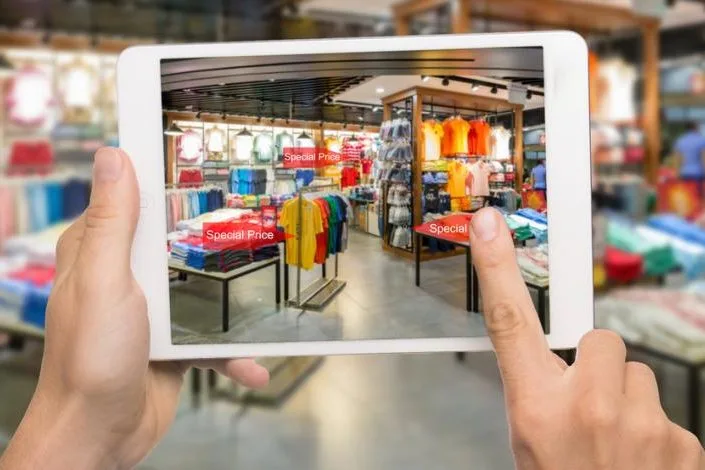How to Make Your Store Run Like a Fulfillment Center

You’ve implemented omnichannel programs like ship from store. But are you fully capitalizing on your store real estate to optimize omnichannel customer experiences and revenue creation?
It’s time to start running your stores like fulfillment centers. You can leverage stores for ship from store, buy online pick up in store (BOPIS) and buy online return in store (BORIS).
Equipping your stores for such omnichannel commerce will position you to expose more inventory, increase sales, and improve brand experience and loyalty. But to achieve those goals, you need to make strategic decisions upfront, implement the right processes, and follow omnichannel best practices.
Identifying Your Store-Based Fulfillment Goals
Stores weren’t created to be fulfillment centers. Fulfillment centers are designed for high-volume sales efficiency. Stores are optimized to serve walk-in customers. But you can adapt each store, depending on factors such as size and location, for close-to-the-customer fulfillment.
That customer proximity equips you to deliver better experiences. It gives customers more fulfillment options. It enables online shopping for merchandise available only in local markets. And it allows you to offer same-day delivery by local shippers or store associates.
Many retailers begin their store-based fulfillment journey with ship from store. Ship from store is more forgiving than other omnichannel variants, because customers don’t select the specific store to ship from. If one store can’t fulfill, your system can transparently shift to a different store.
But as you expand to BOPIS and BORIS, individual store capabilities directly affect customer experience. So you need to be certain every store is prepared to meet its fulfillment requirements.
That starts with identifying what you want to achieve from store-based fulfillment. Do you primarily want to drive additional sales? Are you focused on improving the customer experience? The answer will help you make important decisions – like where customers will pick up items they purchased online. If they pick up in the front of the store, it’s more convenient. If they pick up in the back of the store, they have to walk past merchandise, and you could increase sales.
New Business Model, New Requirements
You’ll need to put in place new processes to support your new business model. Start by thinking through activities from the time customers place an order till they drive off with their merchandise:
- Order prep – How will associates prepare orders? You might pick and pack orders for pickup the same way you do for shipment. Or you might stage them in a dedicated area so that customers can confirm items. At an apparel retailer, an associate might present merchandise in a fitting room for the customer to try on.
- Customer arrival – How will customers announce their arrival for pickup? They might approach a dedicated counter to alert an associate. Or they might use a kiosk to scan a barcode on their order acknowledgement and trigger an associate to retrieve their merchandise.
- Checkout – How will you manage checkout? You’ll probably want to handle payment before the customer comes to the store. But you’ll need to scan the order to confirm pickup. Consider creating a dedicated checkout area so that pickup customers don’t have to wait in line – and don’t slow down checkout for walk-in customers.
Best Practices for Best Outcomes
Making store-based fulfillment successful often comes down to the details. Consider these best practices, based on our experience helping retailers across segments optimize their fulfillment processes:
- Payment – Some retailers complete billing when customers pick up their goods. But it’s often a best practice to charge when you confirm the items are ready for pickup. Once you pick the goods, they’re no longer available for sale. And you want commitment from the customer to come pick them up.
- Order flexibility – You should allow customers flexibility to add to the order or take only part of the order when they pick up. You’ll need a process for recording the adjustments. And if customers fail to pick up orders, you need a procedure for checking the goods back into the system.
- Packaging – Packaging for your fulfillment business will be a lot different from packaging for your walk-in business. You’ll need to predict and stock the right materials. Associates should scan boxes, bags and packing material as they use them to trigger automated orders of supplies.
- Policies – Your stores may span time zones. Some may have more fulfillment capabilities than others. You need to communicate those details clearly so that customers don’t experience unpleasant surprises. Your ecommerce website should clearly state order-cutoff times for same-day pickup.
- Performance – Your associates will need time to print, pick and pack orders. Establish key performance indicators (KPIs) so that everyone’s on the same page. And make sure you maintain enough staff to continue to serve walk-in customers.
- Buy-in and training – Make sure all stakeholders, from regional managers to store managers to associates, understand your business goals – and how their roles support those objectives. That will help you achieve a consistent experience across locations.
Running your store like a fulfillment center will involve a wide range of new processes, plus the fine-tuning of facilities not originally designed for fulfillment. But the rewards can be better experiences for your customers – and higher revenues for your business.
Anthony Hockaday is director of client services for Radial.
